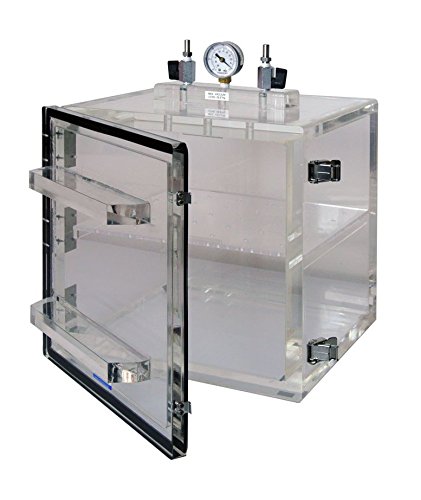Lab desiccators are generally used in laboratories for experimental work and in industries where the user must dry products. Using a lab desiccator when working with volatile materials is recommended as it makes it easier to control the temperature in the space. If you are drying out ethanol, you will require a bigger desiccator as there is a high risk of the material freezing. There are different sizes available; as a general rule, they need to be bigger than the dried substance.
What is Laboratory Desiccator?
The laboratory desiccator is primarily a drying device used to store and transport various materials. These are enclosed in the device so the user can keep it from moisture and humidity. There are different types of desiccators available in the market. Still, all incorporate a tight seal which allows the contents to be stored without any risk of contamination from the outside environment.
It has been estimated that around 95% of all pharmaceutical products are dried using laboratory desiccators, ensuring no moisture or humidity is present around sensitive ingredients like enzymes, proteins, etc.
How does it Work?
There are two types of desiccators one is the low-temperature laboratory desiccator and the other one is the high-temperature laboratory desiccator. These are best suited for storing dry powders and powders that can be stored by the user within a controlled temperature range like pyrogens and enzymes. On the other side is a high heat lab desiccator that comes in three different sizes – small, medium, and large. Usually, this type of desiccator is used for storing inorganic compounds such as salts, metal compounds, etc.
Types of Laboratory Desiccator
Standard or Rigid:
There are two types of lab desiccators, the standard and the rigid. The difference between the two is that a standard lab desiccator has a flexible lid, while a rigid lab desiccator has a lid made of glass or plastic. Also, the lid on a standard lab desiccator can be opened up by the user to 360 degrees, while in a rigid one, it can’t be opened by people beyond 90 degrees.
Standard lab desiccators are usually used for experimental work and are preferred for convenience and greater flexibility. There is also another type of standard lab desiccator called collapsible which does not have a bottom but can be folded and placed in a much smaller space when not in use.
Vacuum:
The vacuum desiccators have a similar design to standard lab desiccators but are much simpler to use. These are ideal for storing powders of pharmaceutical products in a very dry environment.
Automatic:
The automatic lab desiccator has a much higher capacity and can hold almost any substance. It also has a built-in thermostat/timer device that controls the unit’s temperature. It means that the machine takes care of it independently, and it is not necessary to have an operator monitor the system. The automatic lab desiccator also comes in three sizes – small, medium, and large.
Airtight:
The airtight lab desiccators are designed to maintain minimal air pressure inside. These are best suited for storing dry powders and powders within a controlled temperature range, such as pyrogens and enzymes. The main advantage of the airtight desiccators is that they do not allow moisture in at all. You can put all kinds of substances within it without any risk of humidity or contagion.
Other Preferences:
When selecting a lab desiccator for drying, there are other factors to consider. These are the size, working pressure, cryogenic capabilities, etc. Before buying one, make sure you have a clear idea of how you want to use it in your work, as these factors must be considered by the user every time you buy new equipment for experiments and manufacturing processes.
Why use Laboratory Desiccator?
When working on experimental work, it is important to control the conditions in the lab. The only way to achieve this is by using laboratory desiccators, which ensure no moisture or humidity around anything you want to be dried out.
There are many different types of lab desiccators available in the market, and choosing one will depend on what you need it for. Always ensure that you buy one with a lid that the user can open up to 90 degrees before deciding which size and type of desiccator to buy. You can also select between standard and rigid lab desiccators with different capacities depending on what you plan to do with the product.
Conclusion:
Choosing the right Laboratory Desiccator By Global Lab Supply can help you work and ensure a clean working environment. It ensures that all your experiments are conducted without any chance of contamination or inhomogeneity. Choosing the right one will also help you save time and resources, as lab desiccators can be used for different materials at different times.
